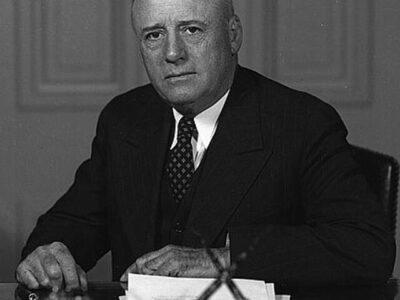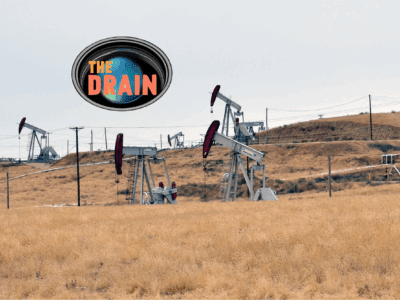It’s Déjà Vu All Over Again
Since opponents can’t seem to come up with any new arguments against climate change legislation, they seem determined to recycle the old, discredited ones. Here’s today’s example, straight from the GOP press release:
Rep. Jim Sensenbrenner, R-Wis., and Rep. Darrell Issa, R-Calif, today urged the Environmental Protection Agency to include several relevant studies in its decision-making record for a major finding on climate policy after it was made public that a senior EPA official suppressed the scientific evidence for apparently political reasons.
“I’m sure it was very inconvenient for the EPA to consider a study that contradicted the findings it wanted to reach,” said Rep. Sensenbrenner, the ranking Republican on the House Select Committee on Energy Independence and Global Warming. “ . . .
This is actually an old story, which has been debunked as many times as the urban myths about alligators in the sewers. (For example, take a look at this June posting in Grist. ) But apparently Sensenbrenner and Issa don’t have anything better to do with their time than recycle discredited stories.
As EPA made clear months ago, the individual in question is in an economist, but his comments weren’t about economics, they were about climate science — a subject on which he has as much professional expertise as my cat. His professional expertise as an economist was completely irrelevant as a matter of law – EPA isn’t allowed to consider cost at all in determining whether a pollutant endangers human health. That’s a scientific issue, not an economic one. The likelihood that he would contribute anything worthwhile to EPA’s findings about climate science was approximately zero anyway, and he might well have been reprimanded for wasting time rather than sticking to his job.
Notwithstanding his lack of any relevant expertise, however, EPA was more than generous in providing him a forum. His comments were submitted to the EPA endangerment team; and his manager allowed his general views on the subject of climate change to be heard and considered inside and outside the EPA and presented at conferences and at an agency seminar. In short, there’s just nothing here at all except EPA leaning over backwards to be tolerant toward an employee’s amateur hobbyhorse. Finally, his manager had enough of him wasting time and told him to get back to his day job.
If there’s a story here, it seems to be EPA’s tolerance of internal dissent, even when the dissenter has little or no credibility.
cross-posted on the CPR Blog
Reader Comments
9 Replies to “It’s Déjà Vu All Over Again”
Comments are closed.






Dear Dan,
The problem with EPA’s carbon dioxide endangerment finding is that it places atmospheric carbon dioxide in the same legal catagory of criteria air pollutants which includes sulfur dioxide, benzene, and chlorine, which actually cause adverse human health effects from inhalation.
Most ordinary citizens with a high school education know that carbon dioxide is a naturally occuring trace gas in the atmosphere, and that breathing carbon dioxide at normal concentrations (250 – 400 ppm) is perfectly healthy.
Since Waxman-Markey is unlikely to become law, EPA is attempting to implement an alternative method of regulation by classifying carbon dioxide as a “pollutant,” on the basis of a fabricated and fake public health problem (endangerment finding).
If EPA eventually succeeds in pushing these regulations through the rule-making process then federal courts will probably overturn them.
Jim, you misunderstand the legal context for this. The U.S. Supreme Court has held (in Massachusetts v. EPA) that EPA must classify carbon dioxide emitted from motor vehicles as an “air pollutant” based on the legal definition of “air pollutant” in the Clean Air Act. This occurred before there was any Waxman-Markey bill, and indeed at a time when EPA had no intention of engaging in any rulemaking that would apply the Clean Air Act to greenhouse gases.
EPA’s proposed endangerment finding proceeds, as it must, from this legal premise articulated by the Supreme Court. It would be acting contrary to law if it were to find, in defiance of the Supreme Court’s opinion, that carbon dioxide from motor vehicles isn’t a “pollutant.”
Your idea that “EPA is attempting to implement an alternative method of regulation by classifying carbon dioxide as a ‘pollutant,’ on the basis of a fabricated and fake public health problem (endangerment finding)” frames the issue backwards. Given the fact that carbon dioxide falls within the relevant legal definition of “pollutant,” the EPA’s next task, under the law, is necessarily to determine whether CO2 emitted from motor vehicles endangers public health or public welfare. Whatever your view of the outcome, this rulemaking process is exactly what the Clean Air Act and Supreme Court decision in Mass v. EPA contemplate occurring.
Sean said:
“…the EPA’s next task, under the law, is necessarily to determine whether CO2 emitted from motor vehicles endangers public health or public welfare…”
It is a well known and time-honored scientific fact that carbon dioxide in the atmosphere does not pose a threat to human health. In order to justify regulating carbon dioxide as pollution, EPA must must fabricate false and misleading information about carbon dioxide health effects.
In the past, EPA has exaggerated and over-stated environmental health effects associated with diapers in landfills, sediment in storm water, suburban development, plastic containers, atmospheric ozone, etc., and this is what EPA is attempting to do with carbon dioxide.
Rest assured that we can safely continue to breath atmospheric carbon dioxide, regardless of the EPA’s endangerment finding. This is merely another example of the junk science which dominates the climate change issue, and yet another reason why we can not trust the EPA.
Again, Jim, whatever your disagreements with EPA, you seem to deeply misunderstand the legal context for this decision.
Moreover, you are arguing against a straw man here. The legal question is whether emissions of CO2 from motor vehicles will cause or contribute to pollution that may reasonably be anticipated to endanger public health or welfare – not whether “breathing” CO2 from the air is harmful.
“Public welfare” is defined in the Clean Air Act as “includ[ing], but is not limited to, effects on soils, water, crops, vegetation, manmade materials, animals, wildlife, weather, visibility, and climate, damage to and deterioration of property, and hazards to transportation, as well as effects on economic values and on personal comfort and well-being.” 42 U.S.C. section 7602(h).
Sean said:
“…The legal question is whether emissions of CO2 from motor vehicles will cause or contribute to pollution that may reasonably be anticipated to endanger public health or welfare – not whether “breathing” CO2 from the air is harmful…”
Dear Sean,
As I pointed out in my first post, the EPA has placed CO2 in the same legal category of criteria air pollutants that cause adverse health effects from inhalation, and this is flat wrong. Apparently we agree that that breathing atmospheric CO2 is not harmful.
Any threat that CO2 may pose to “public welfare” is related to its thermodynamic properties and not toxic effects on human health. Accordingly, CO2 is properly classified as a “greenhouse gas” like water vapor, and not a criteria air pollutant.
CO2 a naturally occuring trace gas in the atmosphere that is vital for life on earth. Human emissions account for only 3-4% of the total global emissions of CO2, with natural emissions composing the remainder.
At this time, it is unclear whether human emissions of CO2 have any effect on “public welfare” but it is clear that human emissions of CO2 have no effect on “public health.”
Dear Jim,
Your spirited defense of storm water sediment, plastic trash, sprawl and ozone is noted.
You need to move on to the next question. The courts already decided–and the Supreme Court agreed–that CO2 must be regulated under the CAA. You may not agree with the science, but the science says that CO2 at levels above 350 ppm DO have an adverse effect on public health and welfare. The health effects are not from breathing CO2, they are indirect, the spread of mosquito-borne disease or crop failures, for example. Many of the conventional pollutants you mention, sulfur-dioxide, for example, are as much, if not more, a public welfare issue as a public health issue. (Acid rain effects on buildings, crops, the NE lakes and forests.)
You are probably just trolling, but if you sincerely want to dialog–to listen as well as toss out flack–I’m sure the folks here will respond.
And if you are looking for a clip to lead off your reply, may I suggest, “Sean, your comments are excellent. Really.”
All criteria air pollutants such as sulfur dioxide, benzene, and chlorine are classified by the EPA as pollutants based upon health effects “criteria” except CO2.
By placing CO2 in this catagory, the EPA is attempting to confuse and mislead ordinary citizens into believing that CO2 is a toxic gas which is making them sick, and so-called “polluters” are killing children to make a profit.
Classifying CO2 as an air pollutant is fraudulent, dishonest and a flagrant attempt to generate hysteria and fear among the public.
Most people know that atmospheric CO2 is safe to breath and any connection to mosquitos, crop failures, and sea-level is remote, speculative, and unproven.
Red Desert said:
“…You may not agree with the science, but the science says that CO2 at levels above 350 ppm DO have an adverse effect on public health and welfare…”
Dear Red Desert,
I have over 25 years of experience as an Environmental Engineer and I am well versed in climate change scientific literature. There has been much speculation and analysis about possible adverse impacts of atmospheric CO2 levels. To the best of my knowledge and information, no solid scientific data has been published which proves conclusively that CO2 levels above 350 ppm have an adverse effect on public health and welfare. More research is necessary before we can draw at any definitive conclusions about about adverse effects.
In conclusion, EPA has not actually classified CO2 as a criteria air pollutant yet. It has only begun the preliminary process and any final decision would be subject to public notice and comment in accordance with the Administrative Procedures Act. Hopefully, prudent and reasonable minds will prevail and this issue will quietly go away.
Pardon me while I take a deep breath laced with CO2. I feel better now.